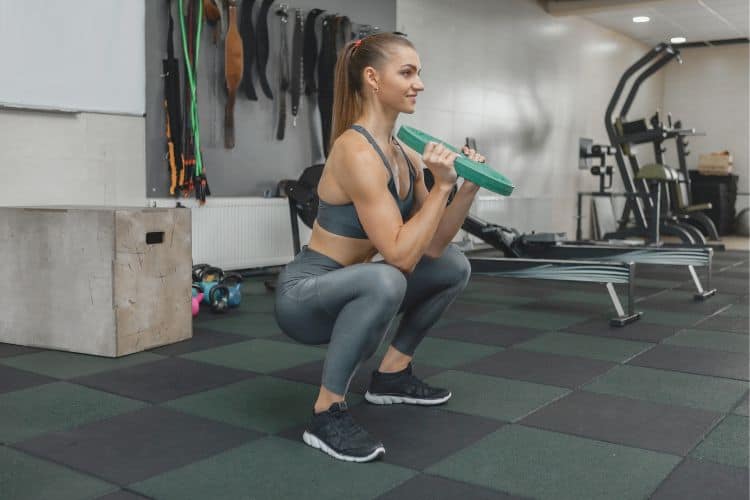Sign up for workout ideas, training advice, reviews of the latest gear and more.






Weight loss: a term that often brings to mind images of endless hours on the treadmill, punishing high-intensity interval sessions, or calorie-counting till the last morsel. But what if there was an alternative route to weight loss, one that not only sculpted your body but also built strength and boosted metabolism? Enter resistance training, a technique that many women are only just beginning to explore for its profound effects on weight loss.
Resistance training, often synonymous with strength training or weightlifting, involves working against a force to build muscle strength. This force can come from dumbbells, resistance bands, gym machines, or even your body weight. Unlike aerobic exercises like running or cycling that focus mainly on cardiovascular endurance, resistance training targets muscle development.
Muscle is metabolically active. This means, the more muscle mass you have, the more calories your body burns at rest. While aerobic exercises do burn calories and fat, resistance training ensures you increase lean muscle mass. Consequently, even when you’re not working out, your body becomes a more efficient calorie-burning machine.
The age-old myth that lifting weights makes women bulky has deterred many from incorporating resistance training into their routines. The reality is that women generally have lower levels of testosterone, the hormone responsible for increasing muscle size. So, unless you’re training at an extremely high intensity and consuming a surplus of calories, bulking up like a bodybuilder isn’t in the cards.
Instead, what resistance training does for women is:
Starting with resistance training can be intimidating, but here’s a beginner-friendly routine:
Your efforts in resistance training will only show results if they are complemented by a balanced diet. Prioritize protein intake as it aids muscle repair and growth. Whole grains, fruits, and vegetables should make up the bulk of your diet. Remember to hydrate well and maintain a slight caloric deficit if weight loss is the goal.
Resistance training for weight loss isn’t a one-time affair. As with any fitness routine, consistency is essential. Aim for at least 3-4 resistance training sessions per week, and vary your exercises to prevent plateaus.
The magic of muscle-building actually happens when you rest. Post a resistance workout, your muscles experience microscopic tears. Rest days allow these muscles to heal, becoming stronger in the process. So, don’t skip those rest days!
Beyond the evident physical benefits of resistance training, there lies a deeper connection between the mind and body during these workouts. Lifting weights or holding a resistance band isn’t just about sculpting muscles; it’s also about developing mental toughness, perseverance, and confidence. Every time you push past a challenging set, you’re not just training your body – you’re also training your mind to overcome obstacles.
Each individual’s body responds differently to resistance training. Factors such as age, genetics, current fitness levels, and dietary habits can influence outcomes. That’s why it’s essential to personalize your training program:
Seek Expert Guidance: If you’re new to resistance training, it might be worthwhile to invest in a few sessions with a personal trainer. They can provide guidance on proper form and suggest exercises tailored to your goals.
No one knows your body better than you. If an exercise doesn’t feel right or causes pain (not to be confused with the regular discomfort of a workout), it’s essential to adjust or skip that particular movement.
Set Realistic Goals: Establish short-term and long-term goals. Whether it’s lifting a certain amount of weight, achieving a toned appearance, or losing a specific number of pounds, setting milestones can keep you motivated.
Resistance training, while a powerful tool for weight loss, is most effective when integrated into a holistic fitness approach. This means:
Incorporating Cardiovascular Exercise: Blend in some form of cardiovascular exercise, be it brisk walking, cycling, or dancing. This will enhance fat burning and improve heart health.
Flexibility and Mobility Work: Don’t neglect the importance of stretching and mobility exercises. These improve muscle function, reduce injury risk, and aid recovery.
Mindfulness Practices: Techniques such as yoga and meditation can complement your resistance training by reducing stress, which is often a hidden culprit in weight gain.
Weight loss journeys can sometimes feel isolating, but you don’t have to do it alone. Engaging with a community can make a significant difference:
Join a Gym or Fitness Club: Being surrounded by like-minded individuals can be a source of motivation. Watching others push their limits can inspire you to do the same.
Online Communities: There are countless online forums, social media groups, and platforms where women share their resistance training experiences, tips, and progress pictures.
Workout Buddy: Having a friend join you in your resistance training routine can make the process more enjoyable and accountable. Challenges become fun, and successes are shared.
Once you embark on your resistance training journey, you’ll notice the ripple effect it has on other aspects of life. Improved muscle strength and tone can lead to better functional fitness – suddenly, carrying groceries, playing with your kids, or climbing stairs becomes easier. The mental resilience built during those challenging workouts starts reflecting in your professional life, decision-making, and how you tackle daily challenges.
While the allure of quick fixes and crash diets in the world of weight loss is hard to ignore, resistance training urges you to adopt a longer-term perspective. It’s not just about dropping pounds; it’s about reshaping your life – both physically and mentally.
When integrated as a lifestyle, resistance training for women promises not just a leaner body, but also a sharper mind, a resilient spirit, and a world brimming with confidence and vitality. Embrace the weights, push past the myths, and discover a version of you that’s powerful beyond measure.
Stay up to date on the latest women’s health, fitness and lifestyle trends and tips.